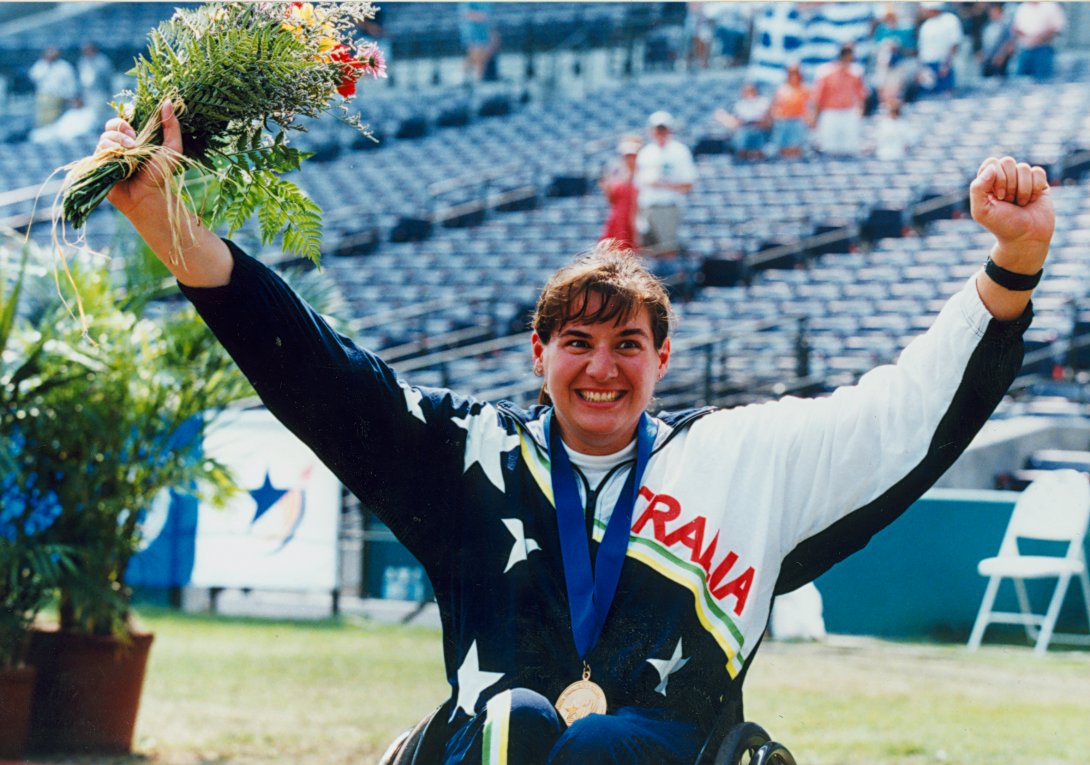Due to scheduled maintenance, the National Library’s online services will be unavailable between 8pm on Saturday 7 December and 11am on Sunday 8 December (AEDT). Find out more.
The 2020 Summer Paralympics are underway in Tokyo, with 179 Australian athletes competing across 18 events over the next 12 days. We thought we would take the time to delve into the National Library’s collection and share the human stories that make the medals possible.
From oral history recordings to vast collections of images, we have a rich collection of material that illuminates the Australian Paralympic movement, bringing individual stories to life.
Some of these stories are available after the Australian Paralympic History project worked with Australia’s Paralympians to digitise and describe public and their personal archives, making them available to all.
The first Paralympians
To mark the 50th anniversary of the Paralympic Games in September 2010, the National Library and the Australian Paralympic Committee undertook a project to record the oral histories of the athletes who attended the first Games in Rome in 1960 – 13 athletes and 9 officials, who raised their own funds to compete.
Since then, 66 interviews have been recorded for the Australian Centre for Paralympic Studies Oral History Project, expanding the focus from the first Paralympians through to athletes in Sydney and beyond.
Among the earliest oral histories from the project is an interview with Kevin Coombs, a Wotjobaluk man who travelled to Rome as a 19-year old from Victoria.

Coombs was hunting rabbits when he was accidentally shot in the back, leaving him paraplegic. In his oral history he speaks about Ludwig Guttmann and the founding of the Paralympics, and recalls his first wheelchair, which was given to him by a local Ford dealer who had sold raffle tickets to raise the money – 'all chrome… it looked beautiful,' says Coombs. He played sport as part of his rehabilitation and took to wheelchair basketball, competing in the national championships in 1960 before being selected for the Paralympics. Asked how he was selected for the team, he laughs and gives a self-deprecating answer: 'I guess because we were available'.
There are also interviews with people who have played key roles in the development of the Paralympic movement in Australia, including Dr. John Yeo, who led the team at the 1968 Games, and Anne Green, an influential coach and administrator in Paralympic swimming.
Sydney 2000
In 2000, the Paralympics came to Australia for the first time. The National Library sent staff photographers Jim Nomarhas and Loui Seselja along to document a range of events, including shooting, swimming, track and field, wheelchair basketball and equestrian.

They also captured the opening and closing ceremonies, and life in the Paralympic village. The athlete’s dining hall featured a range of cosmopolitan options, as evidenced below.

Jim found himself on the other side of the camera in Sydney as well, competing as a shooter at his second Paralympic Games. Following on from a silver medal win in Atlanta, Jim took part in the Air Pistol Men, Free Pistol and Sports Pistol Mixed events in 2000. Here he signs autographs during an athlete’s parade in Canberra.

Australian Paralympic Committee on Trove
In Trove you can find over 3,000 images gathered by the Australian Paralympic History project that document the triumphs and travails of every Australian team. There are also biographies for past and present Australian Paralympians like Louise Sauvage and multi-medallist and current commentator Kurt Fearnley.
